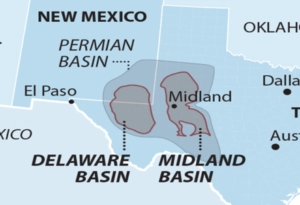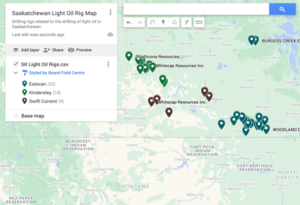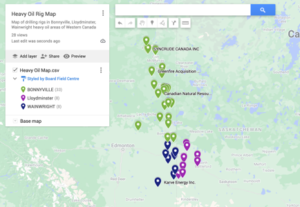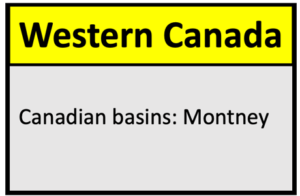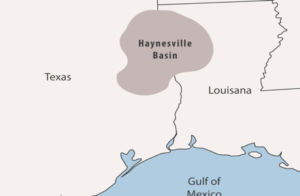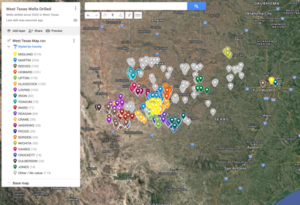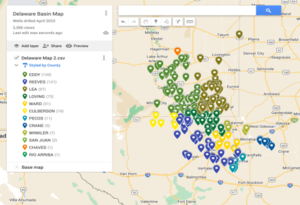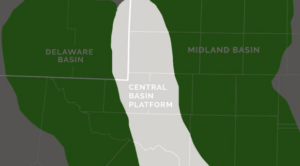The oil and gas industry has been the backbone of global energy production for decades, yet with its growth comes a series of environmental challenges that must be carefully managed. From well blowouts to produced water disposal, and even wildfires disrupting production, recent incidents illustrate the need for sustainable practices and emergency response efforts. This post explores several critical events impacting the oil and gas industry today, with a focus on environmental management and future sustainability.

Toyah, Texas: A Saltwater Geyser and Emergency Response
A dramatic event unfolded outside of Toyah, Texas, as a 100-foot saltwater geyser erupted from a well, prompting swift emergency response efforts led by Kinder Morgan. The eruption released hazardous hydrogen sulfide gas, leading to the establishment of a no-fly zone to protect responders and the public. The cause of the incident is still under investigation, with ongoing efforts to control the well and determine ownership responsibility.
This event highlights the ongoing challenges the industry faces with managing produced water—salty, contaminated water that surfaces during oil extraction. Seismic activity in the area, potentially linked to oilfield wastewater injection, has led the Texas Railroad Commission to restrict new injection permits in an effort to mitigate earthquake risks. As oil production in the Permian Basin continues to soar, the disposal of produced water is an environmental concern that needs to be addressed with innovative solutions.
Produced Water: An Increasingly Unsustainable Problem
The Permian Basin, one of the most productive oil regions in the world, has also become a hotbed for environmental issues related to produced water. As oil production has increased, so has the volume of this byproduct, which is typically disposed of through underground injection wells. However, these traditional methods are facing mounting regulatory pressure due to concerns about seismicity and subsidence.
The industry is at a turning point. To maintain production growth while minimizing environmental risks, operators must adopt more sustainable produced water management solutions. Recycling and desalination have emerged as potential answers to this growing problem, allowing for the reuse of water in operations or its safe disposal. These technologies can not only reduce environmental impact but also lower costs in the long run, aligning environmental stewardship with economic benefits.
North Dakota Wildfires: Nature’s Impact on Oil Production
In another part of the U.S., oil production in North Dakota has been significantly impacted by wildfires. Caused by downed power lines, the fires have reduced production by up to 90,000 barrels per day and disrupted natural gas output. Exxon Mobil and other operators in the region have shut down wells to ensure safety as they assess the damage and prepare for a restart.
This incident is a stark reminder of the vulnerabilities the oil and gas industry faces from natural disasters. Beyond just the immediate loss of production, events like wildfires can lead to long-term disruptions in supply chains, increase operational costs, and heighten scrutiny on the environmental risks associated with oil production. Operators are now focusing on safeguarding infrastructure and implementing risk mitigation strategies to minimize such disruptions in the future.
Diamondback Energy: A Cautious Investment Outlook
In the corporate world, Diamondback Energy has been a standout in the oil industry. However, despite recent positive earnings, there are signs of caution for investors. With a current P/E ratio of 17x, close to the U.S. market average, analysts are forecasting a 2.2% annual decline in earnings over the next three years. This contrasts sharply with the broader market, which is expected to grow at 10% per year.
The potential for a drop in earnings presents risks for Diamondback investors. If the company’s growth outlook doesn’t improve, its P/E ratio could fall, leading to shareholder disappointment. While Diamondback remains a key player in the Permian Basin, these financial forecasts serve as a reminder that growth is not guaranteed, even in the oil-rich regions of the U.S.
Apache Corporation’s Environmental Commitment: 5 Million Trees and Counting
Amid these challenges, there are bright spots in the industry’s push for environmental stewardship. Apache Corporation has made significant strides with its Tree Grant Program, which has donated over 134,000 trees to 52 nonprofit organizations across Texas, New Mexico, and Louisiana this year alone. Since 2005, the program has granted more than 5 million trees, demonstrating Apache’s long-term commitment to sustainability.
This program not only supports the communities where Apache operates but also contributes to larger environmental goals such as urban heat mitigation, habitat restoration, and conservation efforts. By working with partners like Texas Parks & Wildlife, Apache is helping to build a greener, more sustainable future for areas impacted by its operations.
The Path Forward: Innovation, Responsibility, and Sustainability
The oil and gas industry is facing a confluence of challenges, from managing produced water and seismic risks to navigating financial uncertainty and environmental responsibility. As companies like Kinder Morgan, Diamondback Energy, and Apache Corporation respond to these issues, the need for sustainable solutions becomes increasingly clear. Whether through advanced water recycling technologies, improved safety protocols, or corporate environmental programs, the industry must continue to innovate and adapt.
The future of oil and gas production depends on balancing profitability with sustainability. As regulatory pressures increase and environmental risks become more pronounced, companies that can effectively manage these challenges will be better positioned to thrive in the long term. The industry’s ongoing evolution toward more responsible practices is not just a regulatory necessity—it’s a business imperative.
By addressing environmental concerns head-on, the oil and gas industry can continue to fuel the global economy while safeguarding the ecosystems and communities that support it.
Conclusion: The recent incidents in Toyah, Texas, North Dakota, and the broader Permian Basin are reminders of the complex and often unpredictable nature of oil and gas production. However, with innovation and a commitment to environmental stewardship, the industry can meet these challenges and pave the way for a more sustainable future.


